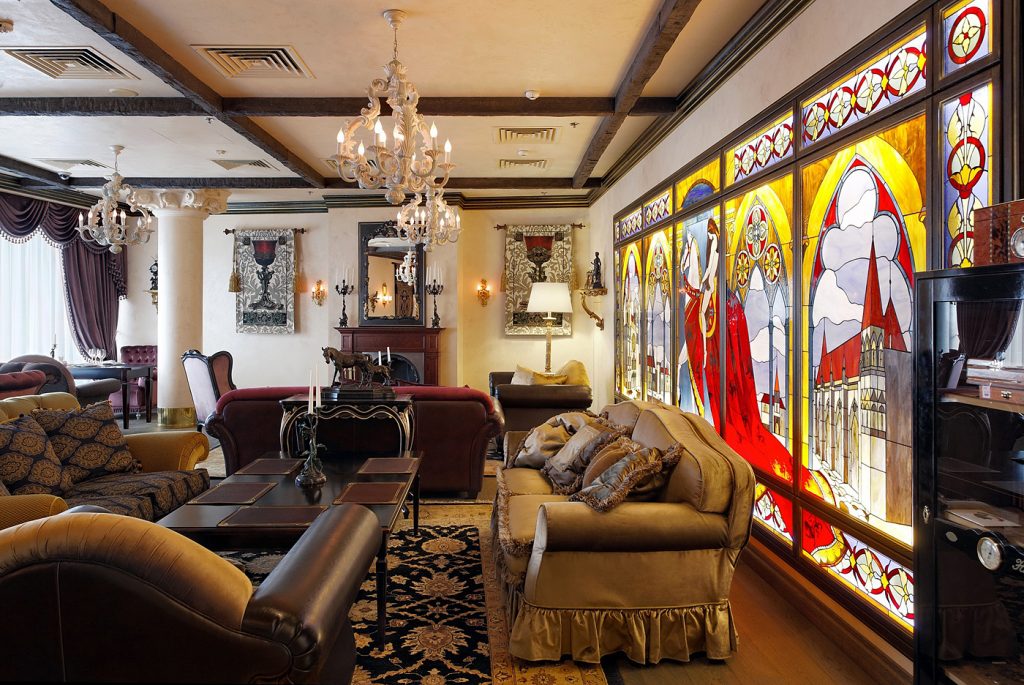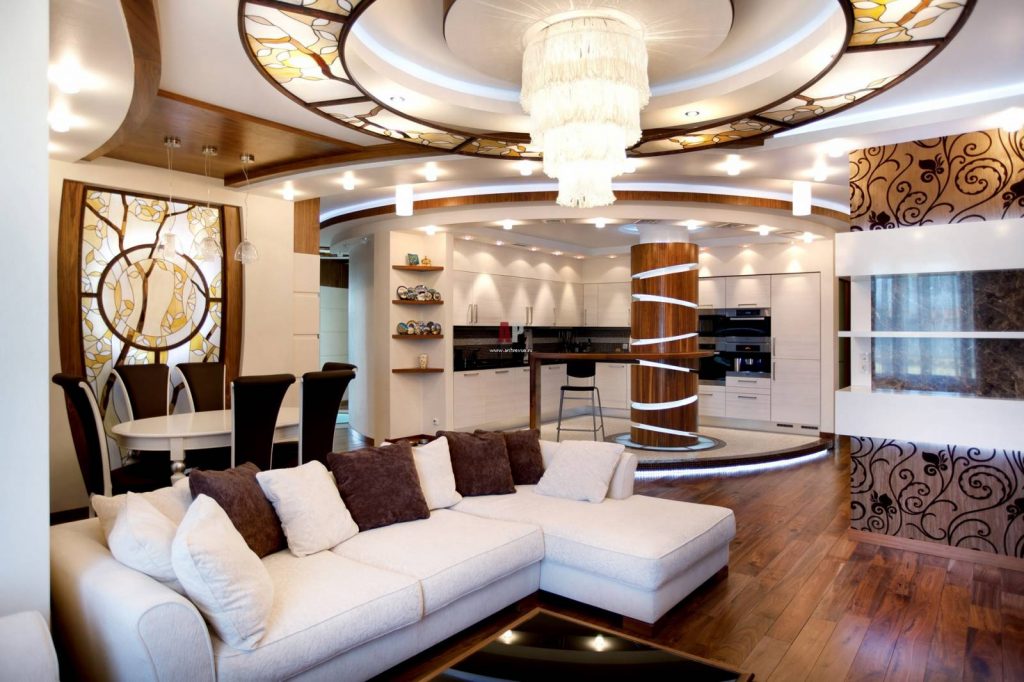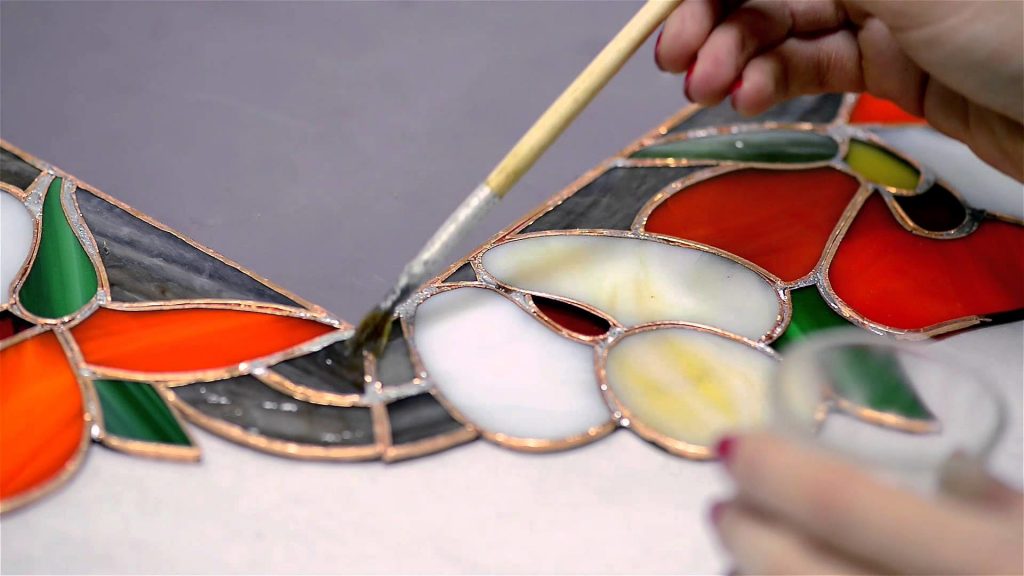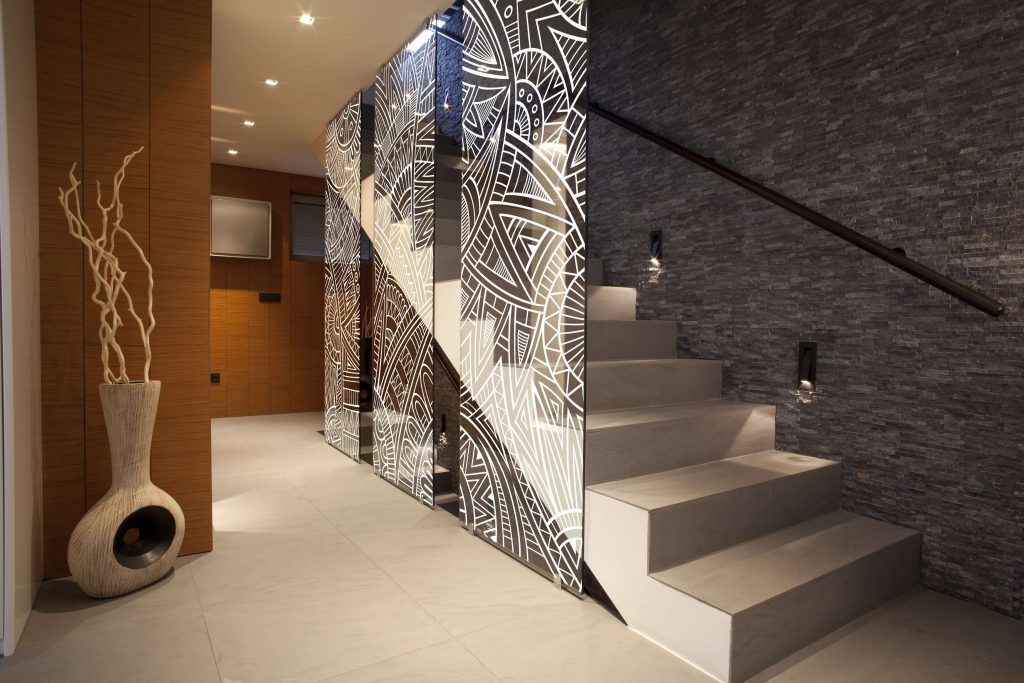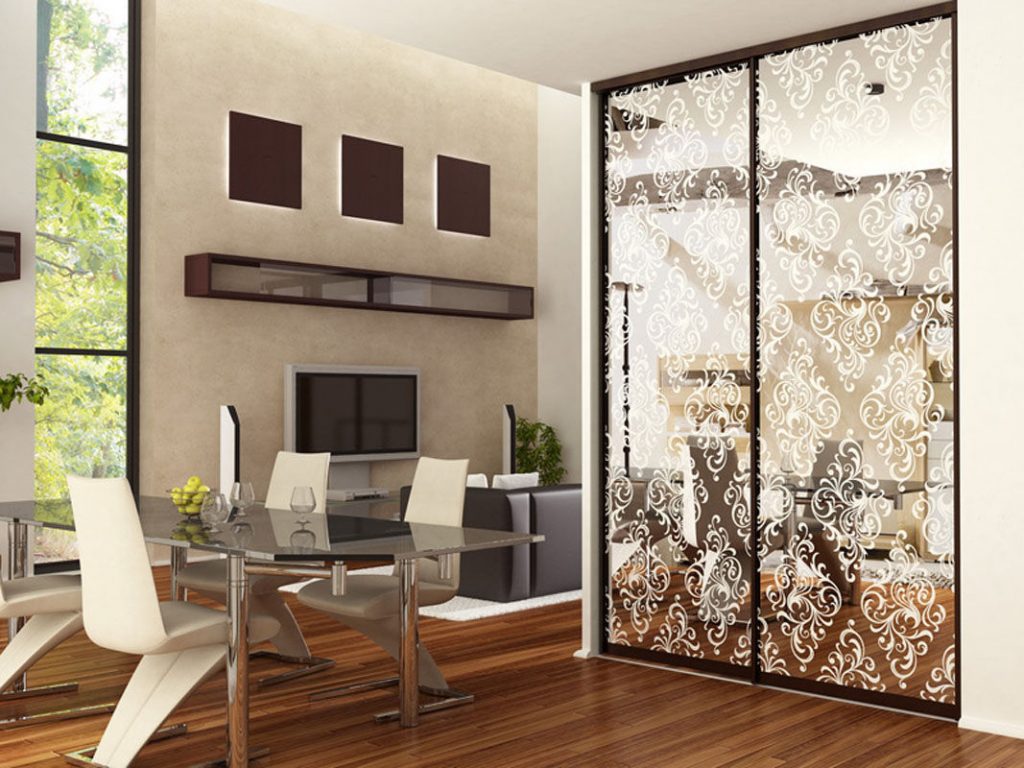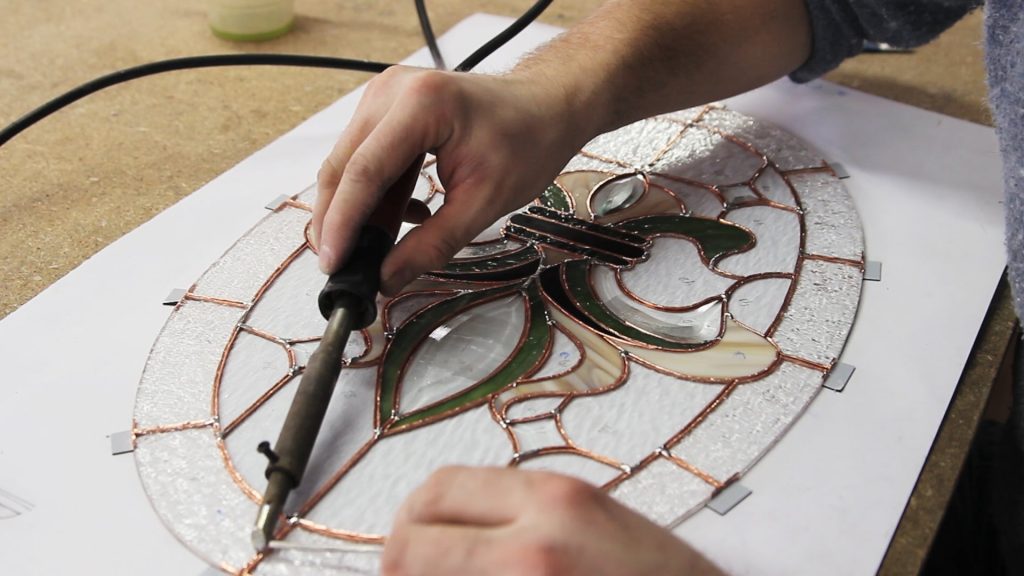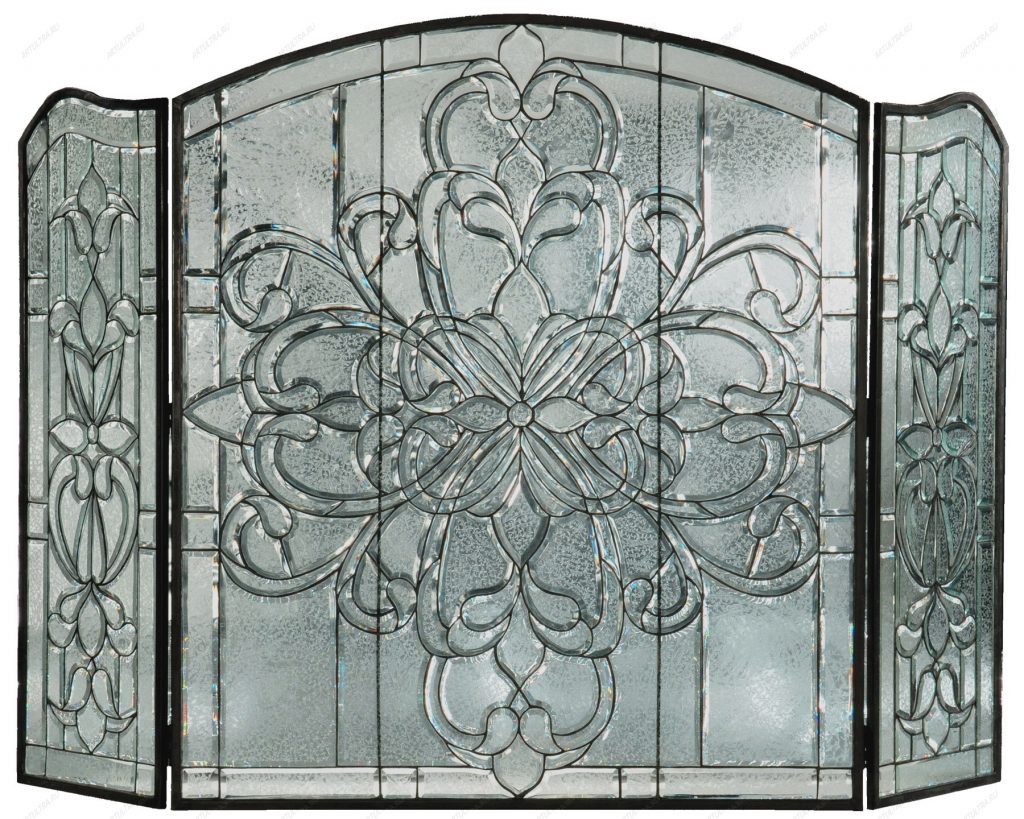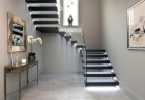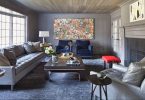Stained glass in the interior of your home
Modern stained glass is one of the most expressive means in interior design, which creates a special and unique atmosphere in the room. If earlier the calculation was solely on natural sunlight, then today artificial lighting and various kinds of illumination are increasingly used, creating an extraordinary and amazing atmosphere of comfort and warmth in the house. glass works great with light, allowing you to illuminate areas of the room in different ways. And thanks to modern technologies, as well as the supply of a number of types of stained glass techniques to the conveyor, the price for such a pleasure, which was previously considered a luxury, has become affordable for many sectors of society. Psychologists advise changing the atmosphere in the house at least once a year to avoid stress. The role of stained-glass windows in this case is out of competition, because by changing the lighting, the appearance of not only the stained-glass window itself, but also the entire room as a whole changes..
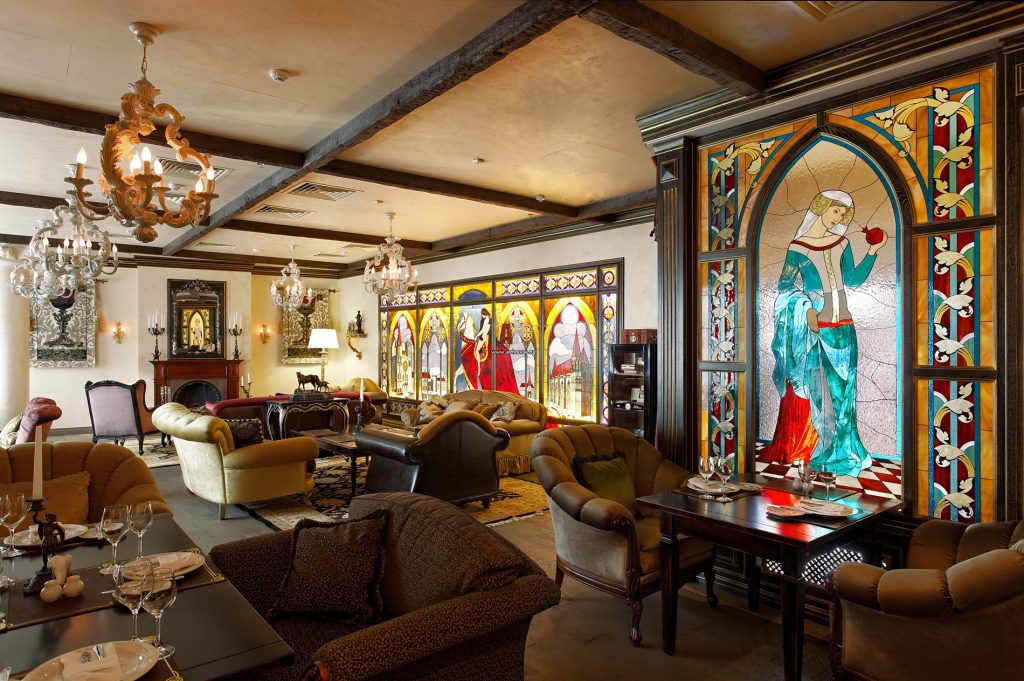
What is a stained glass window? This concept includes a fairly wide range of all kinds of decorative finishing methods for surfaces such as glass or mirror. The unique properties of these materials imply different methods of processing them, which are used, both separately and by mixing or combining different techniques..
Classification and types of stained glass
Classic stained glass
Classic (typesetting) stained-glass window is one of the most ancient methods of decoration, because it originated in the Middle Ages. This technique was used mainly in church buildings, temples and cathedrals. Nowadays, preserved classic stained-glass windows on the windows can be seen if you visit ancient castles, temples, and also manors of Europe. Today, the technology has remained the same, however, in combination with new materials and tools..
Tiffany
The Tiffany technique is named after its creator and founder, Louis Comfort Tiffany, who first created opal glass with extraordinary aesthetic properties in the late 19th century. The extraordinary inner light of the glass and the rich variety of colors were simply amazing. Currently, this technique has gained immense popularity and demand due to its high aesthetic and artistic qualities. Tiffany stained glass is distinguished by extraordinary realism of images and «liveliness» graphics of the created images, which is achieved by using even the smallest glass, as well as convex and concave. In general, from an artistic point of view, Tiffany stained glass windows are comparable to paintings made on canvas, and are real works of art. It should be noted that the technique is almost entirely based on the manual method of assembly, being the very author’s work. Each stained glass window is truly unique and individual, because it is impossible to repeat it exactly the second time even for the most experienced professional master.
Fusing
The Fusing technique provides an opportunity to create unique highly artistic compositions that will become a worthy interior decoration. The process is based on the sintering of glass parts in a special fusing oven. In the modern world, technology appeared relatively recently, however, it has existed since ancient times, because archaeologists have discovered the remains of fusing products in the tombs of the pharaohs.
Sandblasting
Sandblasting originated in the late 19th century, and is a technique for removing the top layer of a glass surface using an abrasive consisting of a mixture of compressed air and pure quartz sand. Despite the seeming simplicity, the technique requires certain skills and experience in handling equipment.
Glass matting can be done both over the entire surface and using a template that allows you to get a smooth pattern on a matte surface and vice versa, a matte pattern on a smooth surface. Sandblasting can be done from two sides: from the front and from the back. In addition, it can be deep or superficial, or even bilateral. The grain of the applied pattern varies from very fine to coarse.
Filled stained glass
Filled stained glass is a highly demanded technique based on the manual method. In this regard, the stained glass master is required to have a certain experience, as well as the talent of the artist, which will allow to achieve a high-quality imitation of the Tiffany technique. Quite often, this technique is confused with glass painting. Nevertheless, its main difference is the presence of a polymer relief contour, which imitates a metal broach.
Facet stained glass
Faceted stained-glass windows are the optimal technique when it is necessary to emphasize a feature in the interior architecture. The unique ability of this decor to refract both natural and artificial light in a special way, creates a spectacular glow similar to precious stones such as diamonds. The technology of creating a faceted stained-glass window is comparable to the classical one. The only difference is that all or several elements of the glass picture are processed in a special way in several stages..

